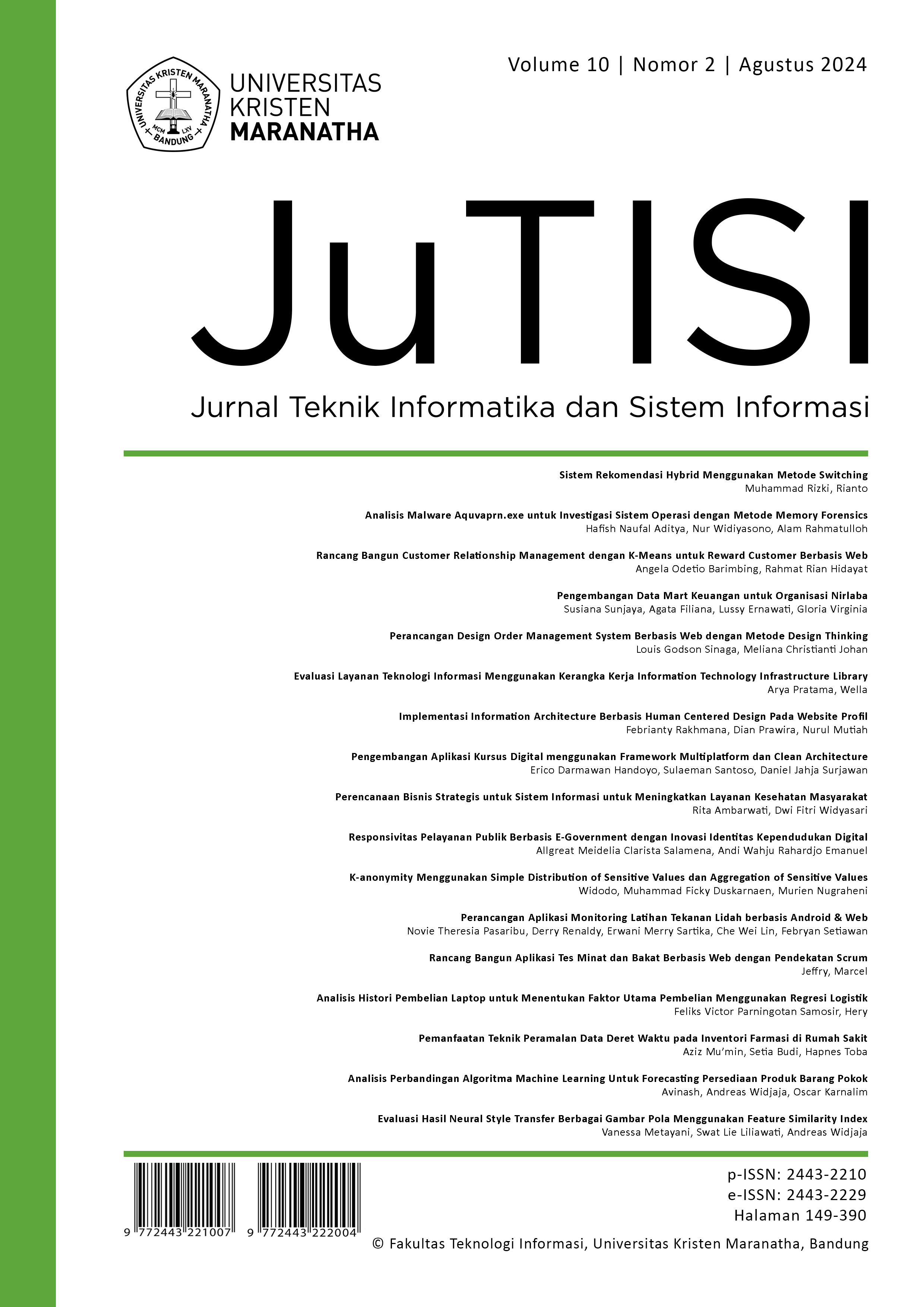The k-anonymity using Simple Distribution of Sensitive Values and Aggregation of Sensitive Values
Main Article Content
Abstract
Anonymizing microdata is a matter while the microdata is published or shared. The purpose of anonymization is sothat sensitive data will not be known by unauthorized parties either directly or indirectly. The technique that is widely used isgeneralization and suppression in the k-anonymity model, however, this technique has the disadvantage that the level of information loss is quite high. In addition, the generated microdata representation due to anonymization is too large, thus it needs to be simplified. In this research, an anonymity model is built using a sensitive attribute distribution technique, namely Simple Distribution of Sensitive Values (SDSV). The main purpose of this method is to reduce the probability of unauthorized parties guessing the owner of sensitive data. Meanwhile, to simplify the representation of the microdata, the aggregative of sensitive value (ASENVA) technique is applied. The result shows that the SDSV metho has less information loss compared to others, while the use of ASENVA simplifies the representation of anonymized tables to an average of 13.67% for aggregated quasi-identifier tables and 6.35% for sensitive tables.
Downloads
Download data is not yet available.
Article Details
How to Cite
[1]
W. Widodo, M. F. Duskarnaen, and M. Nugraheni, “The k-anonymity using Simple Distribution of Sensitive Values and Aggregation of Sensitive Values”, JuTISI, vol. 10, no. 2, pp. 294 –, Aug. 2024.
Section
Articles

This work is licensed under a Creative Commons Attribution-NonCommercial 4.0 International License.
This is an open-access article distributed under the terms of the Creative Commons Attribution-NonCommercial 4.0 International License (https://creativecommons.org/licenses/by-nc/4.0/) which permits unrestricted non-commercial used, distribution and reproduction in any medium.
This work is licensed under a Creative Commons Attribution-NonCommercial 4.0 International License.

